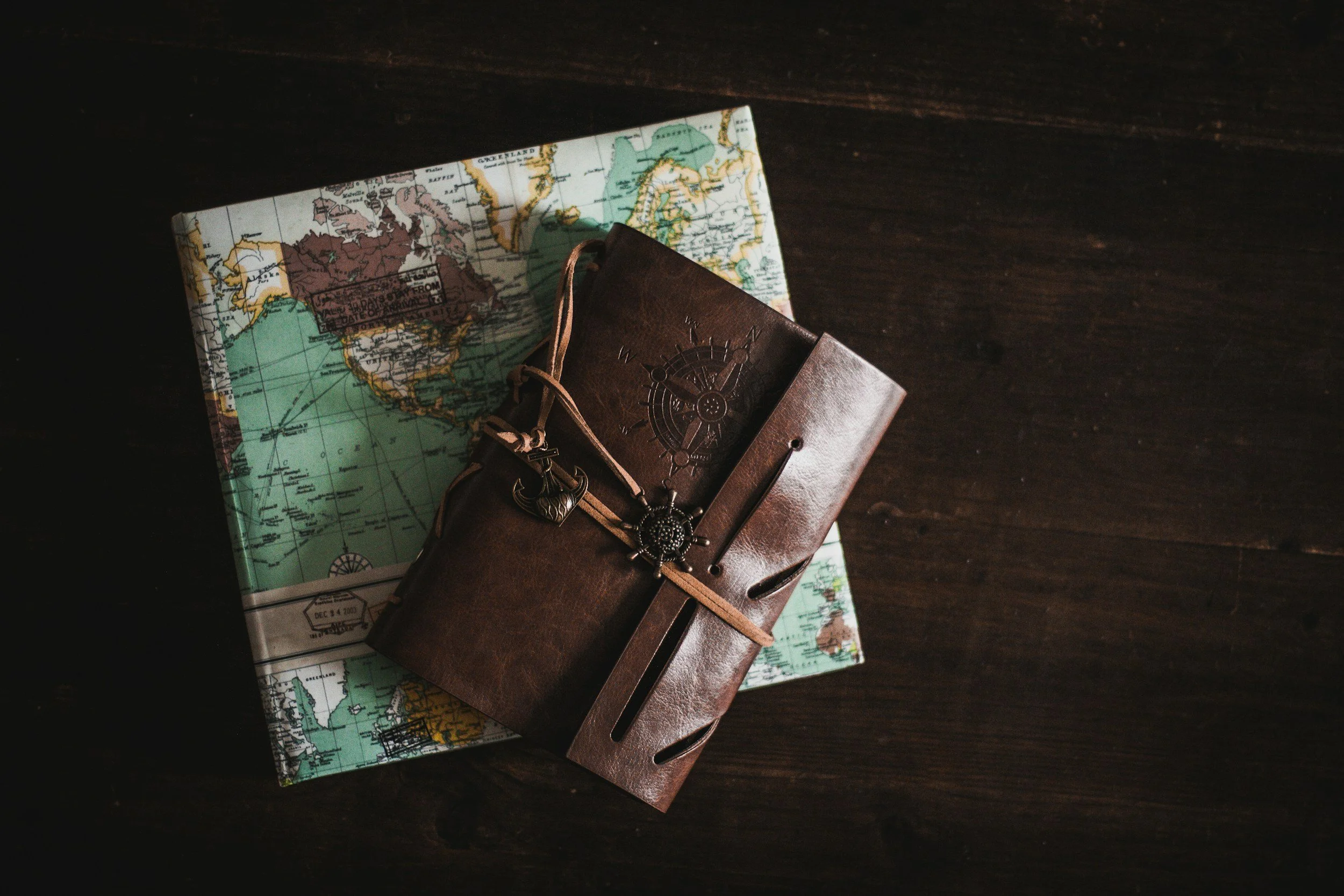10 of the most surreal places in Malaysia to escape into nature
Photos from left: Cappan, Juhku, Williv
Malaysia might not be the first country that comes to mind when you think of the most surreal places to visit, but it hides a few landscapes that feel almost otherworldly.
This post gathers some of those surreal places in Malaysia that blur the line between dream and reality. They’re not always famous or easy to find, but they hold that disorienting beauty that nature sometimes reveals when you least expect it.
These are the natural wonders in Malaysia that remind you how strange and extraordinary the earth can be. They’re natural places that feel unreal, where the details pull you a little further from the everyday.
If you prefer places that invite rest instead of awe, you might like my selection of the most peaceful nature retreats in Malaysia.
But if you’re here for wonder, read on for the most surreal places in Malaysia to feel closer to nature, and maybe a little further from everything else.
The most surreal landscapes and natural wonders in Malaysia
1. Kuala Selangor
I almost left Kuala Selangor out, thinking it was too familiar to be surreal, but it might just be one of Malaysia’s most magical places. Within this small coastal town, three natural wonders coexist: a reflective sandbar that appears and disappears with the tides, rivers lined with flickering fireflies, and bioluminescent plankton glowing along the shore.
By day, the Sky Mirror emerges only a few days each month, when the tides unveil a hidden sandbar. The shallow water turns the seabed into a perfect mirror, dissolving the horizon until it feels as though you’re standing in the sky. At night, the riverbanks come alive with the soft glimmer of fireflies, like moving constellations in the mangroves. Their numbers have declined over the years, but a conservation plan has been set in motion. And if you’re lucky, you might glimpse the Blue Tears, a faint bioluminescence of plankton trailing in the waves.
Each of these sights could stand alone, but together they form a day-to-night rhythm of light and reflection. Kuala Selangor may not feel remote or untamed, yet its beauty remains strangely unreal, as if nature decided to stage a quiet magic show by the sea.
2. Ulu Geroh, Perak
Ulu Geroh is a small Semai village in Gopeng, tucked deep within one of Malaysia’s oldest rainforests. The forest is alive with a world of hidden flora and fauna, yet three wonders define Ulu Geroh’s magic.
Here, the Rafflesia, the world’s largest flower, blooms only during certain months, its vast red petals unfolding from the forest floor like something out of another world. Along the rivers, clusters of Rajah Brooke’s Birdwing butterflies, Malaysia’s national butterfly, gather in flashes of emerald and black. And when night falls, the forest reveals its most secret spectacle: bioluminescent fungi, or glow-in-the-dark mushrooms, that emit a soft, ghostly light beneath the trees.
The trails are guided by the local Semai community, who continue to protect and share the rainforest through small-scale eco-tourism.
3. Mossy Forest, Cameron Highlands
Mossy Forest is one of those places that feels like stepping into a story you half-remember from a dream. Perched along the ridges of Mount Brinchang in Cameron Highlands, it sits at an altitude where the air turns cold, the mist drifts low, and the ground stays damp enough for moss to blanket nearly everything in sight.
The forest is thick with ferns, orchids, and gnarled trees wrapped in layers of moss, giving it a soft, otherworldly texture that feels far removed from the tropical lowlands below. Light filters through the fog in muted shades, sometimes revealing just enough of the path to keep moving forward.
Part of the Mossy Forest is accessible via a wooden boardwalk, built to protect its fragile ecosystem. Yet even with these traces of human presence, it remains a place both ancient and mystical.
4. Royal Belum State Park, Perak
Tucked in the far north of Perak near the Thai border, Royal Belum State Park is part of the Belum-Temengor Forest Complex, one of the oldest rainforests on Earth, estimated to be over 130 million years old.
This vast expanse of emerald canopy stretches across valleys, rivers, and lakes, home to endangered species such as elephants, tapirs, and hornbills. The forest is dense and largely untouched, with several salt licks attract wildlife.
Visitors usually explore by boat from Lake Temengor, weaving between forested islands and mist-covered water.
5. Gunung Mulu National Park, Sarawak
Hidden deep in northern Sarawak, Gunung Mulu National Park is one of those places that feel almost unreal. A UNESCO World Heritage Site, it’s home to some of the world’s largest cave systems, including the vast Sarawak Chamber and the famous Deer Cave, where millions of bats pour out at dusk in swirling formations.
The park’s landscape feels otherworldly – rivers vanish into caves, jagged limestone peaks rise through the mist, and narrow trails wind through layers of dense green.
6. Kubah National Park, Sarawak
Kubah National Park sits on the outskirts of Kuching, where rainforest, waterfalls, and wildlife coexist in lush abundance. The park is known for its rich variety of palm species, ferns, and vine-draped trees. Clear streams flow into small pools and cascades, forming gentle waterfalls throughout the forest.
As night falls, the famous Frog Pond comes alive with a chorus of croaks and trills, each belonging to a different species, some no bigger than a coin.
7. Bako National Park, Sarawak
Bako National Park may be compact, but it contains an astonishing range of landscapes and life within its borders. Just a short boat ride from Kuching, it’s a wild pocket where mangrove forests, swampy lowlands, dipterocarp jungle, and windswept cliffs converge.
The park is known for its contrasting terrain: dramatic sea cliffs, secluded sandy coves, and streams that cut through dense rainforest. Among its most famous landmarks was Serpent Rock, a limestone formation sculpted by centuries of erosion before it collapsed in February 2024, one of many naturally carved rocks that line the coast.
Nearly every major type of Bornean vegetation can be found here, making Bako a living showcase of biodiversity. It’s also one of the best places to spot the rare proboscis monkey, often seen lounging in the trees near the mangroves.
8. Maliau Basin, Sabah
Known as Sabah’s “Lost World”, Maliau Basin is one of the most remote and mysterious places in Malaysia – a vast, bowl-shaped basin surrounded by steep cliffs that make it almost completely self-contained. Because of its isolation, much of the forest inside remains largely untouched, sheltering ecosystems that have evolved in near-secrecy for millennia.
The basin is a world of misty ridges, hidden lakes, and cascading waterfalls, including the seven-tiered Maliau Falls, one of its most photographed landmarks. Scientists and conservationists often describe it as a living laboratory, where new plant and animal species are still being discovered.
Few visitors ever make it here; reaching the basin requires permits, guides, and long treks through dense jungle. But that’s what makes it feel extraordinary, a place seemingly beyond the ordinary world, as if nature decided to keep one last wilderness for itself.
9. Danum Valley, Sabah
Danum Valley in Sabah is one of the few places on Earth that has remained almost entirely untouched since prehistoric times. This vast stretch of primary lowland dipterocarp forest is a rare remnant of primeval rainforest, where some of the tallest tropical trees rise high above the canopy.
Its ecosystem has stayed largely undisturbed, serving as a sanctuary for species such as orangutans, pygmy elephants, clouded leopards, and countless birds that thrive beneath its dense green cover.
10. Kundasang & Kinabalu Park, Sabah
Kundasang, often called the “New Zealand of Borneo”, lies in a highland valley framed by the towering silhouette of Mount Kinabalu. Its cool air, rolling pastures, and misty mornings make it one of Sabah’s most serene escapes.
Nearby, Kinabalu Park, Malaysia’s first UNESCO World Heritage Site, shelters a remarkable range of life across four climatic zones. Its exceptional biodiversity includes many species found nowhere else on Earth, like the elusive Rafflesia that blooms briefly and spectacularly, and the rare Kinabalu giant red leech that inhabits only these mountain heights.
Together, Kundasang and Kinabalu Park feel almost otherworldly, shaped by mist, ancient forests, and the sheer scale of Mount Kinabalu.


















